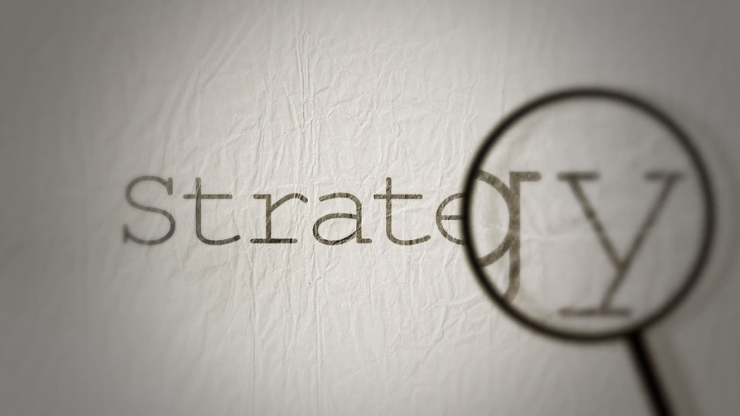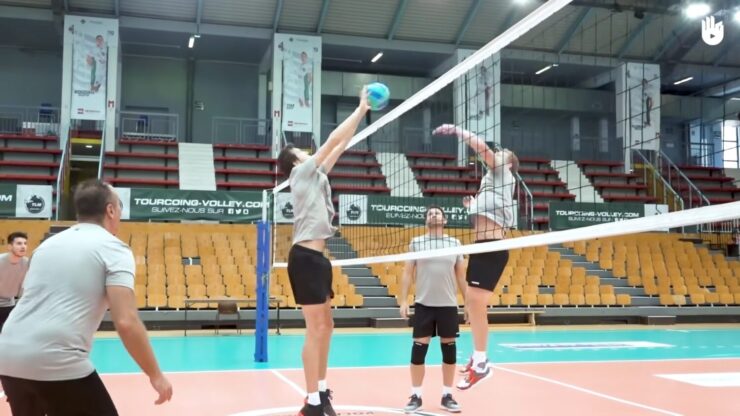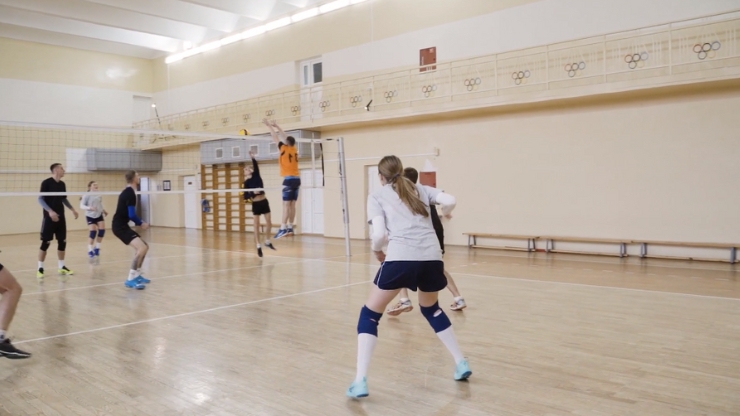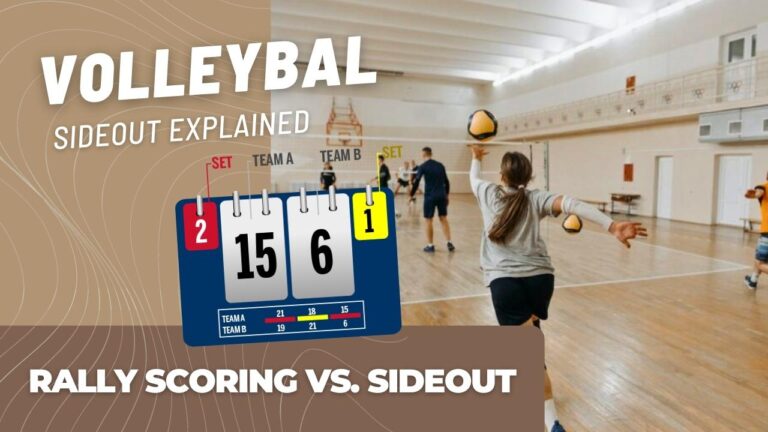Spike the ball into the world of volleyball, and you’ll soon stumble upon the term “sideout.” An integral part of the sport, it has a rich history and considerable influence on the game’s dynamics. This term, deeply ingrained in the game’s lexicon, traces its roots to the traditional scoring method in volleyball. However, it still holds relevance today despite significant changes to scoring systems.
Whether you are a seasoned player or a novice enthusiast, understanding what sideout means can help you better appreciate the intricacies of volleyball. It’s not just about the points tallied on the scoreboard; it’s about the strategy, teamwork, and the very fabric of the game that is shaped by the rules of scoring. So, let’s dig deep into the game’s past, present, and future to unravel the intriguing saga of sideout in volleyball.
The Basics
In the simplest terms, a “sideout” in volleyball occurs when the receiving team wins a rally while the serving team fails to score. This terminology originates from the early days of volleyball, where only the serving team could score points. If the receiving team won the rally, they would get the right to serve, and an opportunity to score points, hence “sideout”.
This term has stuck around, even though the rules of the game have evolved significantly. Today, regardless of the scoring system in play, a “sideout” is still used to describe the event when the serving team loses the rally, and the serve switches to the opposing team. The concept of sideout plays a significant role in the game dynamics and helps shape the strategies employed by teams.
Now that we have a basic understanding of what sideout means in volleyball, we need to delve deeper into the scoring systems that this term is associated with. There are primarily two scoring systems in volleyball: the traditional sideout scoring and the more modern rally scoring. Each of these scoring systems has a unique impact on how the game is played and perceived.
Mastery of various techniques, such as precise footwork and controlled contact, can greatly enhance a player’s performance when it comes to striking the ball in volleyball.
The Evolution of Volleyball Scoring: Rally Scoring vs. Sideout

The evolution of volleyball scoring has witnessed a significant shift from the traditional sideout scoring to the modern rally scoring. The game started with sideout scoring, where only the serving team could earn points. If the receiving team won the rally, no points were awarded, but they gained the right to serve, a process called a “sideout.”
However, over time, the volleyball community felt a need for a scoring change. Many believed that sideout scoring made the matches too long and unpredictable. So, in the late 1990s, a new scoring system, known as rally scoring, was introduced. Unlike sideout scoring, rally scoring allows either team to score, whether they served the ball or not.
This transition from sideout to rally scoring was a significant milestone in the history of volleyball. It not only changed how the game was scored, but it also transformed the strategies, player roles, and game dynamics. While sideout scoring is no longer the primary scoring method in most formal volleyball competitions, understanding it offers valuable insights into the sport’s strategic depth and historical evolution.
Understanding the roles and positions on a volleyball team, including the crucial position known as the “ace,” can greatly impact a player’s ability to contribute to the game.
How Does Sideout Scoring Work?

In the sideout scoring system, the only way a team could score was by winning a rally while serving the ball. If the serving team lost the rally, the serve would switch to the opposing team – a sideout –but no points would be awarded. The receiving team now turned serving team after the sideout, would then have their opportunity to score points.
This system required teams to have both excellent defensive skills to prevent the serving team from scoring and strong offensive skills to capitalize on their serving opportunities. Matches could go on for a considerable amount of time under the sideout system, given the scoring solely relied on the serving team winning the rally.
The game was played to 15 points, and the team needed to have at least a two-point advantage to win. However, the matches’ length was unpredictable due to the scoring system, where long sequences of play could occur without any team earning points.
Key Differences: Rally Scoring vs. Sideout

The introduction of rally scoring brought about several crucial changes to volleyball. The most obvious difference between rally scoring and sideout scoring lies in the scoring opportunities. In rally scoring, a point is awarded after every rally, regardless of which team served. This makes the game more fast-paced and predictable in duration as compared to sideout scoring.
Another significant difference is the total number of points required to win a set. In rally scoring, games are typically played to 25 points (15 for the fifth set, if required), while under the sideout system, matches were played to 15 points. This increase in points makes every rally crucial and keeps the intensity high throughout the match.
Moreover, rally scoring has influenced how teams approach their serve. In sideout scoring, the serve was primarily a tool to start the rally and was not seen as an aggressive offensive play. However, in rally scoring, the serve has become a weapon, and teams often use it to put their opponents on the defensive right from the start.
Advantages and Disadvantages of Sideout Scoring

Sideout scoring, though largely phased out in professional volleyball, has its distinct advantages and disadvantages. One of the significant advantages was that it encouraged robust defensive and offensive play. Teams had to be skillful on both ends to win. This also resulted in longer rallies and required more endurance from players, thereby emphasizing physical conditioning and strategic play.
However, the unpredictability of match length under the sideout system was a significant drawback. The games could drag on without a clear endpoint in sight, making it difficult for broadcasting schedules. Additionally, this system could be more confusing for casual fans or newcomers to the sport, as it’s not as straightforward as rally scoring where every rally results in a point.
Finally, while sideout scoring presented a unique challenge and depth of strategy, it could sometimes result in less exciting games. If a strong serving team dominated the match, it could lead to fewer lead changes and less back-and-forth action.
Strategies

The sideout scoring system brought with it unique strategies for teams. Since only the serving team could score, a premium was placed on maintaining the serve. Teams developed strategies to maximize their scoring runs while serving and disrupt their opponents’ rhythm during their service.
Defensive tactics were also key under the sideout system. Teams had to prevent the serving team from scoring, knowing that they wouldn’t be able to score themselves until they won the serve back. This brought about a focus on skills like digging and blocking, as well as careful positioning and effective communication on the court.
Offensively, teams often utilized the serve as a setup for a controlled offensive play rather than an aggressive attempt to score. The first hit was viewed as a strategic play to initiate a sequence that would ideally culminate in a score. The main goal was to keep the serve as long as possible to create more scoring opportunities.
The Impact of Sideout Scoring on Game Dynamics

The sideout scoring system had a profound impact on the dynamics of volleyball games. For starters, it put a significant emphasis on serving and service reception. If a team could consistently win their service points, they could control the game’s pace. Likewise, receiving teams were compelled to disrupt the server’s rhythm and reclaim the serve, pivoting the game’s momentum.
The switch in serving rights also led to frequent rotations in the team lineup on the court. This constant shifting required players to be versatile, capable of handling different positions and responsibilities throughout a match. Every player, regardless of their specialized role, needed to have a comprehensive skill set.
Most importantly, the sideout scoring system made every serve matter. Since scoring was tied to the serve, the pressure was on the server not to squander the opportunity by committing service errors. This gave the game a unique rhythm and tension, where teams were perpetually on the offensive and defensive brink.
Rally Scoring: A Shift in Volleyball Scoring Philosophy

The shift to rally scoring represented a fundamental change in volleyball’s scoring philosophy. With this new system, volleyball became more dynamic, faster-paced, and more spectator-friendly. Each rally guaranteed a point for one team or the other, which amped up the excitement for every play.
Rally scoring also brought about a change in tactics and strategies. Teams now had to be equally focused on offense and defense, regardless of whether they were serving or receiving. The serve transformed from merely a set-up play into a potential point-scoring strike. This evolution increased the emphasis on service accuracy and aggression.
Furthermore, rally scoring added predictability to the match duration, making volleyball more television-friendly and accessible for spectators. This change has played a significant role in growing the sport’s popularity worldwide and has made volleyball a staple in international sporting events like the Olympics.
Which Scoring System is Better: Rally or Sideout?

The question of whether rally or sideout scoring is better doesn’t have a straightforward answer. It primarily depends on one’s perspective and what aspects of the game one values more. Rally scoring certainly brings more dynamism, speed, and excitement to the game. It’s easier for spectators to follow, adds more strategic depth, and makes every rally count.
However, purists who appreciate the game’s historical roots may prefer sideout scoring for its emphasis on serving and its strategic nuances. The sideout system undeniably necessitates well-rounded skills, superior endurance, and tactical intelligence. It also offers a unique rhythm and a distinctive tension that is tied to the service game.
In the end, the choice between rally and sideout scoring comes down to a balance between preserving tradition and evolving for broader appeal and excitement. While rally scoring is the standard in professional volleyball today, understanding and appreciating the sideout scoring system offers valuable insights into the game’s strategic richness and historical evolution.
Final Words

The evolution of volleyball scoring from sideout to rally scoring is not just a change in rules; it signifies the sport’s progress. The sport has evolved to maintain its inherent excitement while becoming more viewer-friendly and globally popular.
While sideout may seem like a relic of the past, its influence on the sport is indelible. Its strategic depth, focus on well-rounded skills, and the unique rhythm it gives to the game of volleyball is all part of the sport’s rich heritage.

